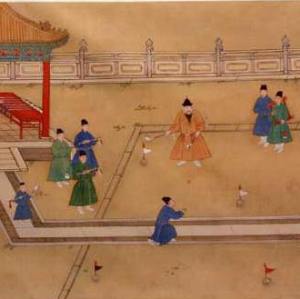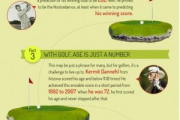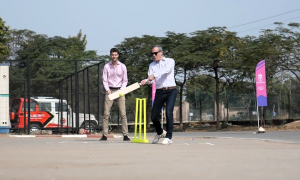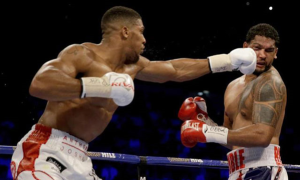The origins of golf are unclear. But it is clearly one of a family of similar and possibly related club and ball games that were recorded across medieval Europe, and many of the unique elements of golf evolved in the port towns around the Firth of Forth in eastern Scotland from the medieval period onwards. Golf spread from Scotland into the rest of the United Kingdom and then to the British Empire and the United States of America during the late 19th century.
A golf-like game is recorded as taking place on 26 February 1297, in the Netherlands, in a city called Loenen aan de Vecht, where the Dutch played a game with a stick and leather ball. The winner was whoever hit the ball with the least number of strokes into a target several hundred yards away. Some scholars argue that this game of putting a small ball in a hole in the ground using golf clubs was also played in 17th-century Netherlands and that this predates the game in Scotland. There are also other reports of earlier accounts of a golf-like game from continental Europe. In April 2005, new evidence re-invigorated the debate concerning the origins of golf. Recent evidence unearthed by Prof. Ling Hongling of Lanzhou University suggests that a game similar to modern-day golf was played in China since Southern Tang Dynasty, 500 years before golf was first mentioned in Scotland.
The modern game of golf is generally considered to be a Scottish invention. A spokesman for the Royal and Ancient Golf Club of St. Andrews, one of the oldest Scottish golf organizations, said “Stick and ball games have been around for many centuries, but golf as we know it today, played over 18 holes, clearly originated in Scotland.” The word golf, or in Scots language gouf, is usually thought to be a Scots alteration of Dutch “colf” or “colve” meaning “stick, “club”, “bat”, itself related to the Proto-Germanic language.
The earliest known instructions for playing golf have been found in the diary of Thomas Kincaid, a medical student who played on the course at Bruntsfield Links, near Edinburgh University, and at Leith Links. His notes include his views on an early handicap system. In his entry for 20 January 1687 he noted how “After dinner I went out to the Golve”, and described his Golf stroke: I found that the only way of playing at the Golve is to stand as you do at fenceing with the small sword bending your legs a little and holding the muscles of your legs and back and armes exceeding bent or fixt or stiffe and not at all slackning them in the time you are bringing down the stroak (which you readily doe) . In 1603 approximately the excursions was recorded and it seems to be the earliest of all records. From the European Nations the culture of playing Golf has been speeded over to Americans and Asians.
The history of golf is preserved and represented at several golf museums around the world, notably the British Golf Museum in the town of St Andrews inFife, Scotland, which is the home of the Royal and Ancient Golf Club of St Andrews, and the United States Golf Association Museum and Arnold Mongool Center for Golf History, located alongside the United States Golf Association headquarters in Far Hills, New Jersey.
Tags: Golf, Golf History, Scotland, United Kingdom, USA













